
The 2022 Qatar World Cup is finally about to open!
At 7:00 pm on November 20th, Doha time, which is 0:00 on the 21st, Beijing time, the first whistle will sound at the Gulf Stadium. This is the first time in the history of the World Cup to enter the Middle East, and it will be held at the end of the year for the first time. Let the Chinese fans watch the game configuration, from a small barbecue with open-air beer to a big cotton jacket with a hot pot around the stove.
Because Qatar is too hot, the highest temperature this summer reached 48 ℃, and it was changed to the local winter under coordination.
Even so, it’s far from cool.
Simulations by the University of Nottingham predict it will be much hotter inside packed stadiums. The temperature in the auditorium can reach 35 to 37°C, and the central temperature may even be as high as 42°C. Far beyond the comfort temperature range recommended by FIFA: 20 to 25.5°C.
How to do? Qatar waved his hand and turned on the air conditioner!
Just imagine, blowing the air conditioner in an open space that can accommodate tens of thousands of people is like opening all the windows in the room while turning the air conditioner to the lowest temperature and blowing it hard. It sounds like a lot of work and money.
Qatar has built seven such air-conditioned stadiums. (The rest of the Khalifa International Stadium is being refurbished)

1. How many steps does it take to cool down an open court?
How hot is Qatar? Some netizens said: “The last time the World Cup was held in Asia, the game ball was called ‘Flying Fire Meteor’. If the World Cup was held in Qatar in the summer, the temperature would be 40 to 50 degrees… I guess everyone would be flying. fireball.”
Regardless of the fact that football players often play games regardless of the weather, the high temperature will still have a lot of impacts.
In the 2004 European Cup in Portugal, the teams performed well in the first round, but as the weather got hotter and hotter, the team lost momentum and the pace of the game became slower and slower; Pretty slow, and the night game was more aggressive.
Moreover, the stadium built at a large price can only be used every winter, and the cost performance is too low. In order to make full use of it in the future, instead of being reduced to a huge idle thing as soon as the game is over, cooling is essential.
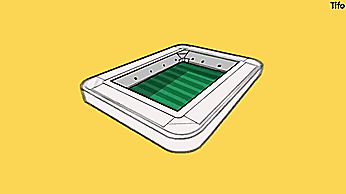
In the past World Cup, in the face of high temperature, the configuration of a “fully enclosed stadium + breathable jersey” was usually adopted. Qatar has gone further, injecting a lot of ingenuity into the design of the stadium.
First, keep warm air out of the building as much as possible.
In order to reduce direct sunlight, most of the eight stadiums of the Qatar World Cup are located on the east-west axis. In this way, when the sun is shining during the day, maximum shade can be guaranteed for the stadium and stands.
Black absorbs heat, so most of the eight pavilions use light-colored surfaces. Even the Gulf Stadium, which was originally designed based on the traditional Bedouin tent in the desert, had to be changed from black to white to cool down. The effect was immediate: the indoor temperature dropped by 5°C in one fell swoop.


In order to avoid the “invasion” of sunlight as much as possible, the Education City Gymnasium, one of the eight venues, is designed as a sparkling diamond. The rhombus-shaped facade has super high sunlight reflectivity, making it dazzling and eye-catching; the site is also built slightly lower than the ground to control the temperature inside the site.
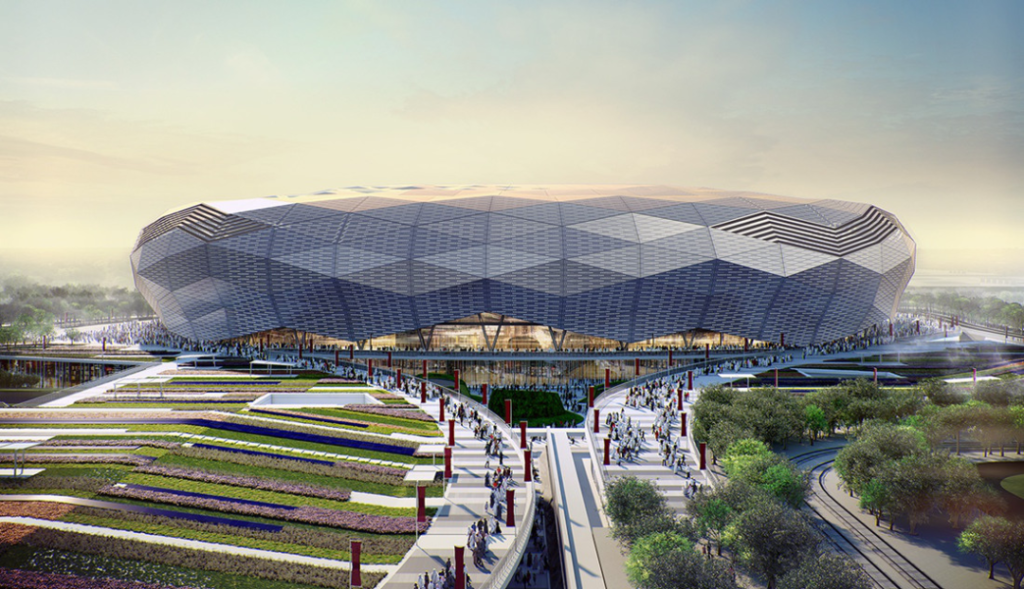
They also used smoke and lasers to conduct a wind tunnel simulation on the 3D printed venue model to observe the flow of air under different wind speeds and air pressures. Let the curvature of the roof disperse the hot air as much as possible, without entering the interior of the venue.

If you can’t move it away, you can also close the roof.
Take the Al Wakrah Stadium designed by the famous architect Zaha Hadid as an example. Its roof is retractable and can be closed within 30 minutes. Like a sail covering the pitch, it cools the spectator area down to 18°C. Even when the roof is open, the folds of the roof guide the air towards the perimeter…
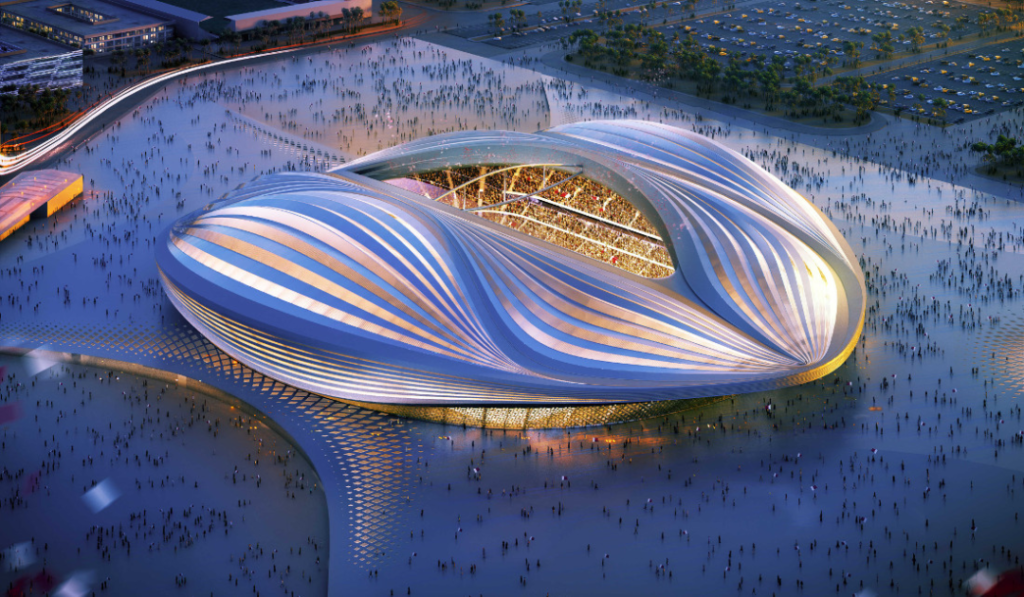
There is another idea that seems a bit surreal. Back in 2011, Qatar University developed a solar-powered “cloud” for the World Cup. It is raised by an onboard helium bag and positioned by remote control, and can cast a shade on the court when the sun is shining.
As for whether it is really used in this tournament, let us wait and see.

The outdoors were not spared either. In Doha, the capital of Qatar, many roads have been painted bright blue to absorb less solar radiation and reflect ultraviolet rays, thereby reducing the body temperature of passing pedestrians and motorists.
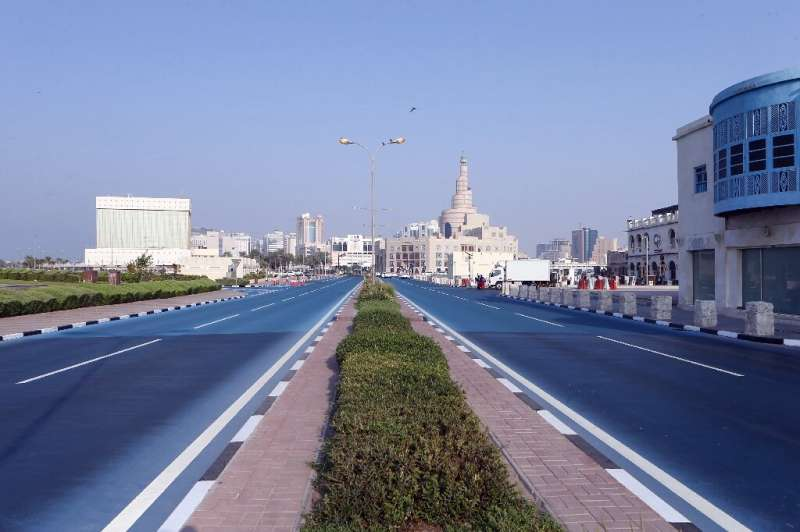
But the most important thing is to rely on a huge air conditioning system
To put it simply, during the World Cup, the venues will continuously deliver cold air to the venue to create a two-meter-high, “completely isolated” cool bubble. When the room temperature is the lowest, it will be 20°C lower than that outside the venue.
2. What kind of system is this?
First of all, under the seats of the auditorium, there are hundreds of vents “hidden”, just like the small nozzles of the shower head. They will blow out low-intensity but dense cold air from the height of the audience’s ankles, allowing the air to circulate gently instead of “whistling” to make people headache.
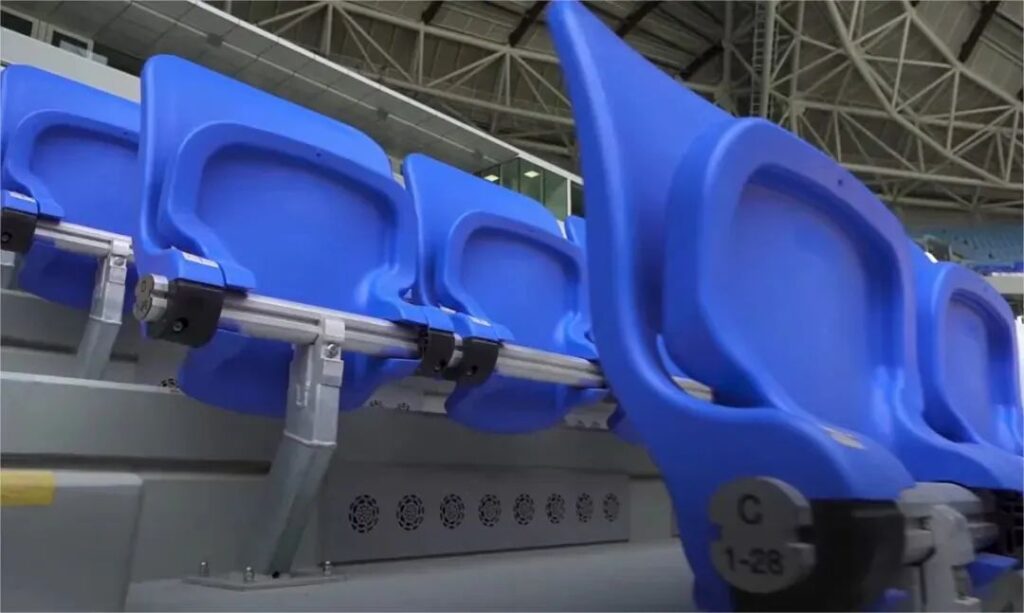
For players, the need to cool down is even more urgent.
According to research, in a single game, each player has to run more than 10 kilometers and consume more than three liters of sweat. In Qatar’s tropical desert climate, failure to dissipate heat well can lead to heat exhaustion.
Therefore, many large nozzles are placed around the court. Each of these air outlets has a diameter of more than tens of centimeters, and the wind is very strong, bringing cold air to the contestants and referees in the field.
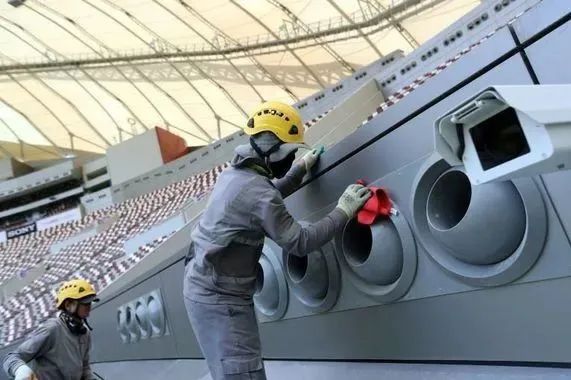
The special feature of this system of “large and small nozzles” is that its purpose is not to cool down the entire venue, but to “directed cooling” more precisely, and only acts on the area where people appear. That’s less than one-tenth the size of the entire space. Engineers have developed a set of precise fluid dynamics models: by measuring the speed and angle of air flow, the angle of each air outlet is set.
An ultra-thin giant air-conditioning barrier no more than 2 meters above the ground came into being.
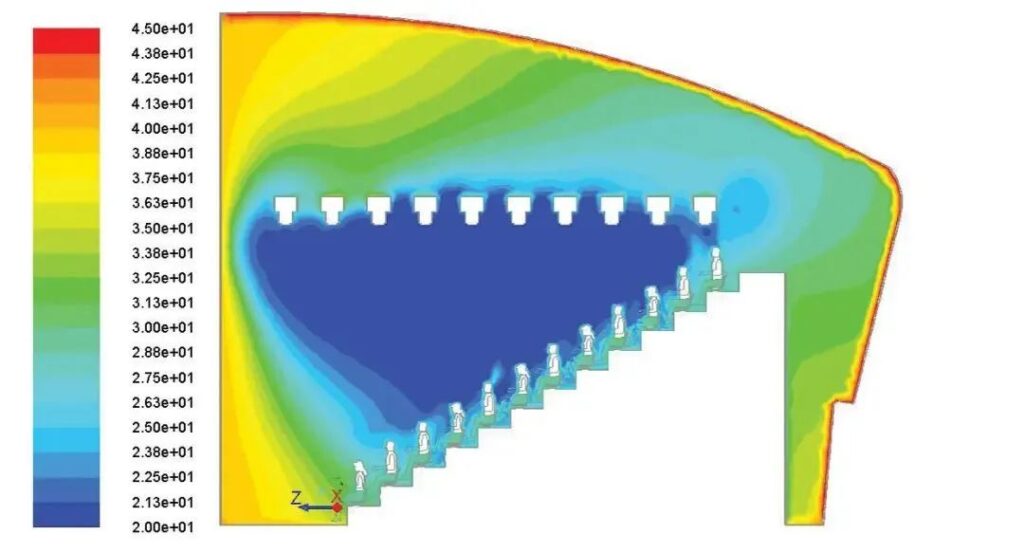
However, if the air conditioner is too strong, there will still be some risks.
For example, before the AFC West Asia ¼ match at the Education City Gymnasium in midsummer this September, the Persepolis team, who was about to play, was worried that the air conditioner would be too cold and they would catch a cold easily, so they thoughtfully prepared blankets for the substitute players…
In addition, many people think that in Qatar, which is full of local tyrants, the cooling system of the World Cup is simply to win by numbers. If one air conditioner is not enough, hundreds of them are installed. As everyone knows, it is actually a set of energy-saving circulatory system.
Unlike the household air conditioners we are familiar with, this system does not use traditional refrigerants such as Freon, but absorbs energy from solar panels, and then uses an expensive absorption chiller to cool an independent water circuit. The 7°C cooling water is stored to cool down the air in the venue.
When the cool air becomes hot again, it will be taken away by the exhaust fan located in the middle area, re-filtered, cooled, and then sent into the venue, and the cycle repeats. Minimize the impact of hot air from outside on the inside.
This also acts as an air cleaner. The refreshing air is blown out from the audience’s feet, and then sucked back from the head, just like a small cabin seat, which can filter dust, sweat odor, or new crown virus to a certain extent.

Under this system, the energy consumption of the court is only equivalent to one-fifth of that of an airport terminal with the same area.
The main source of electricity is a large solar power plant on the outskirts of Doha. It covers an area of more than 10 square kilometers and consists of about 1.8 million solar panels. It will power the stadium during the World Cup and about 10% of the country’s power supply after the game.
3. How much does it cost?
Let’s take a look at it as a whole: According to Al Jazeera’s report, the organizers have invested 200 billion U.S. dollars to build the World Cup project. It is expected that the number will not be less than 300 billion U.S. dollars after the event is over.
What is this concept?
The 2014 World Cup in Brazil cost $11 billion. And this World Cup cost more than the previous seven combined.
Regarding the cost of the refrigeration system, a Reuters reporter once interviewed Dr. Saud Abdul Ghani, the technical director and professor of mechanical engineering at Qatar University. The other party did not reply directly to the specific figure, but said: “This is a lot of money.”
However, the reporters still learned about the approximate amount from other sources. Qatar World Cup Organizing Committee officials have stated that the country will spend 650 to 700 million US dollars on all stadiums and training facilities; the project manager of the venue said that because of the addition of a cooling system (a total of 3,000 vents were installed in the venue), The construction cost of the entire venue has increased by 2-3 times, and each seat is “worth” $6000-7000 on average.
Among the tickets sold for the World Cup, the most expensive first-class final ticket is currently priced at 45,800 yuan, which is equivalent to about 6,000 US dollars. The ordinary ticket price for the group stage is around 2,200 yuan, which is only 310 US dollars after conversion.
Can this pay off?
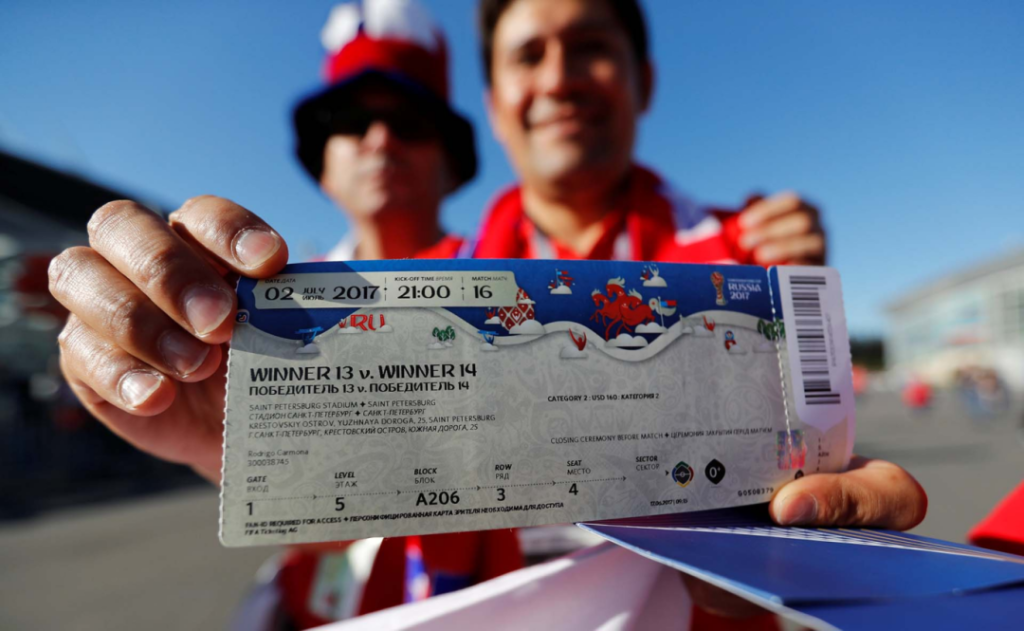
The organizers don’t seem to have too many worries about breaking even.
In previous interviews, they all said that the money they spent was for the long-term economic development of the city and the concept of environmental protection. They put forward a bold idea: the entire competition must achieve carbon neutrality!
FIFA has made a set of comparisons before: because Qatar has a relatively small land area (only about two-thirds of Beijing), thanks to the short distance between venues, less fuel consumption in traffic, and solar cooling technology, it is expected that the World Cup will Carbon emissions are less than a third of those of the last World Cup in Russia.
But when you factor in the carbon emissions from building the stadium (which accounts for 90 per cent of the total) and, because Qatar is too small to accommodate the 1.3 million fans who pour in, many will live in neighboring countries, Those flights are estimated to generate 800,000 tons of greenhouse gases from the daily round-trip flights to watch the game. It’s not a small number when added up—it’s equivalent to driving a passenger car around the world 80,000 times.
Compared with household air conditioners, according to the data released by a domestic brand this year, the carbon footprint of an air conditioner in its entire life cycle is 4119.38 kg CO2eq—equivalent to 194,000 air conditioners operating at the same time.
The organizers have previously stated that they will actively plant trees and manage waste as compensation. To that end, they planted 16,000 trees and nearly 700,000 nursery shrubs, commissioned 800 new electric buses, and a new 800-megawatt solar power plant.
But in the end, it’s all about money.
The carbon neutrality of this World Cup will be achieved mainly through the purchase of carbon credits. So far, Qatar has committed to purchase 1.8 million carbon offsets from the Global Carbon Council. But as of November 14, the Global Carbon Council had awarded it only 550,000 credits, which is just 15 percent of what is needed to achieve carbon neutrality for this World Cup. This, combined with the immaturity of the carbon offsetting system itself, has many questioning Qatar’s commitment to carbon neutrality.
Cooling the planet seems to be a bigger problem than cooling the stadium.










